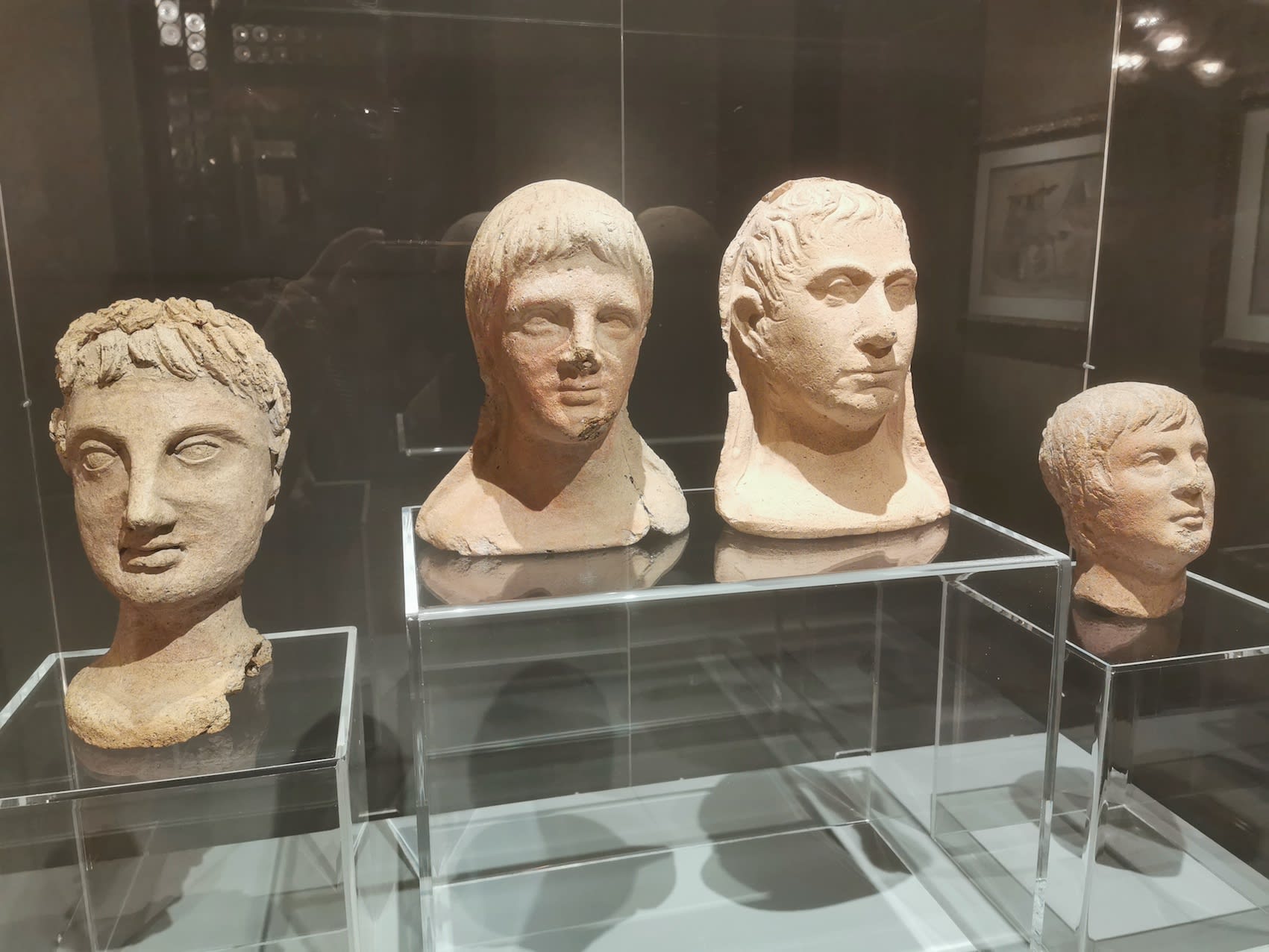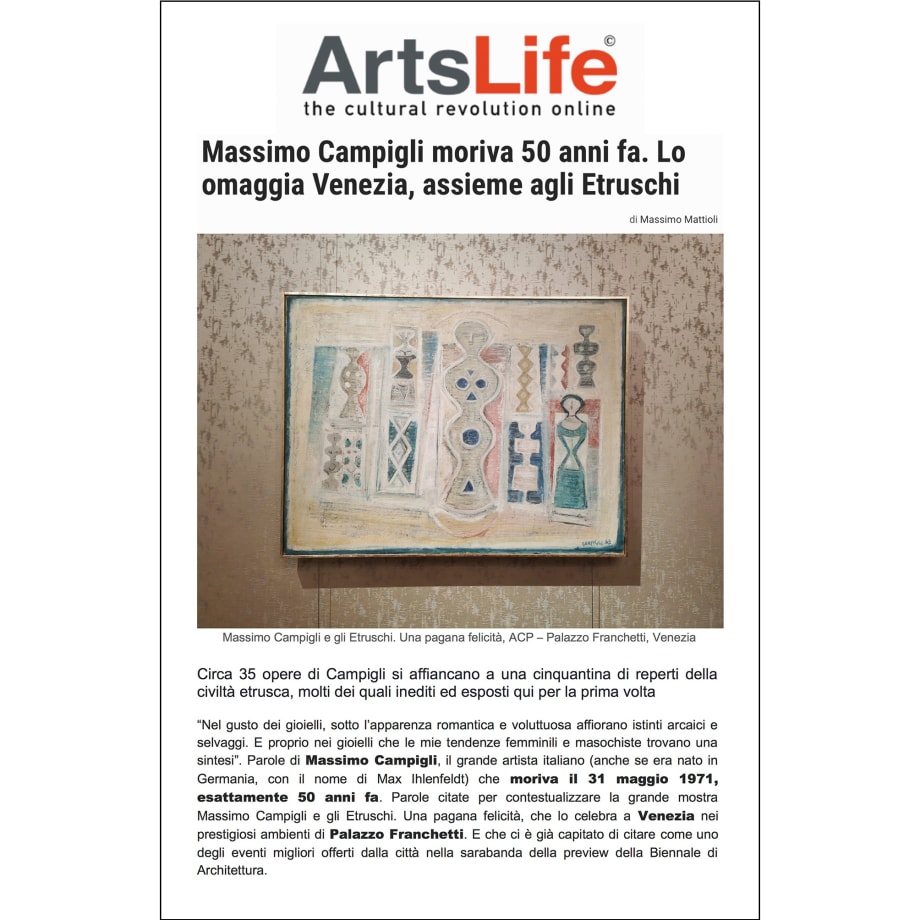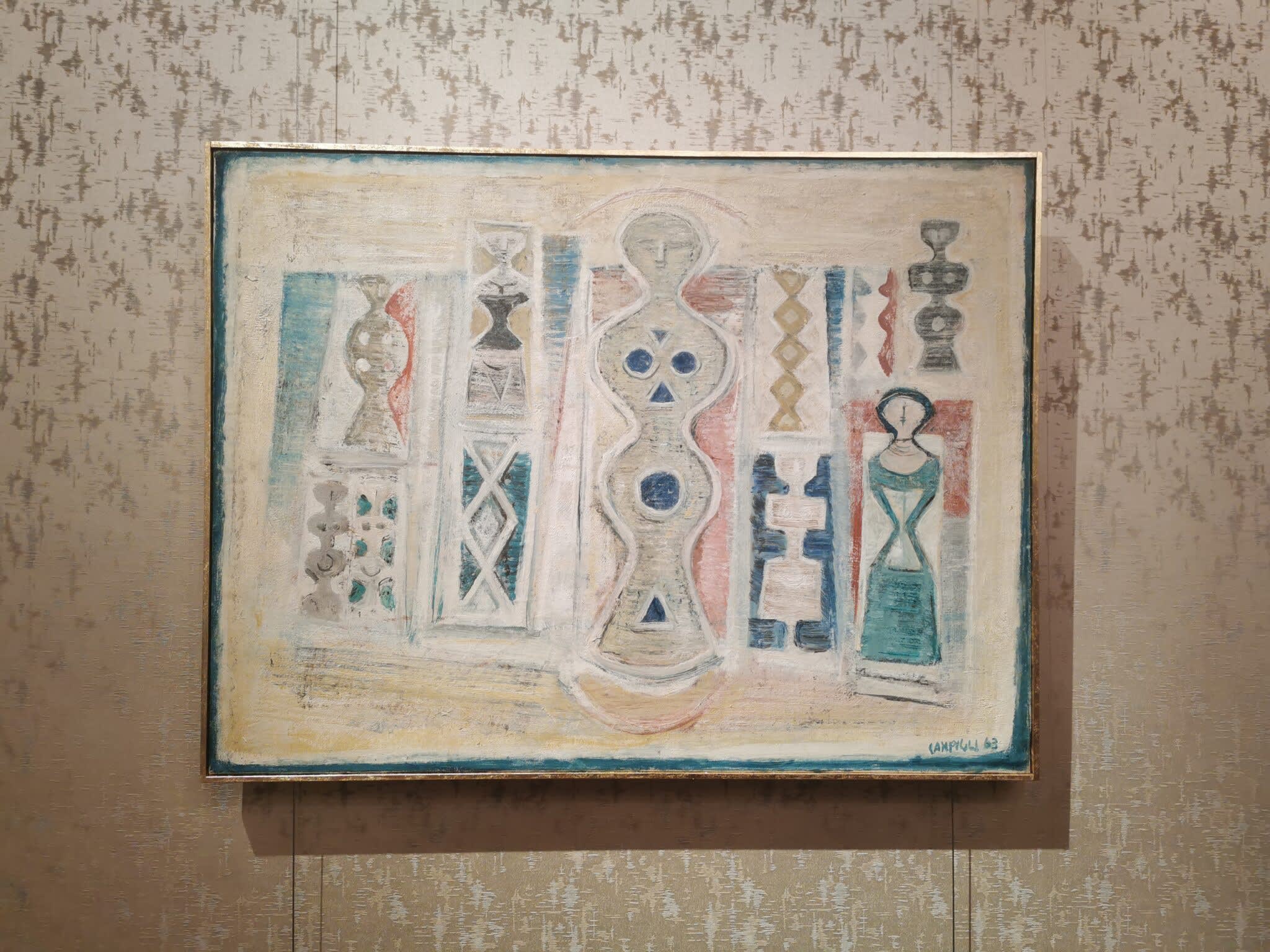
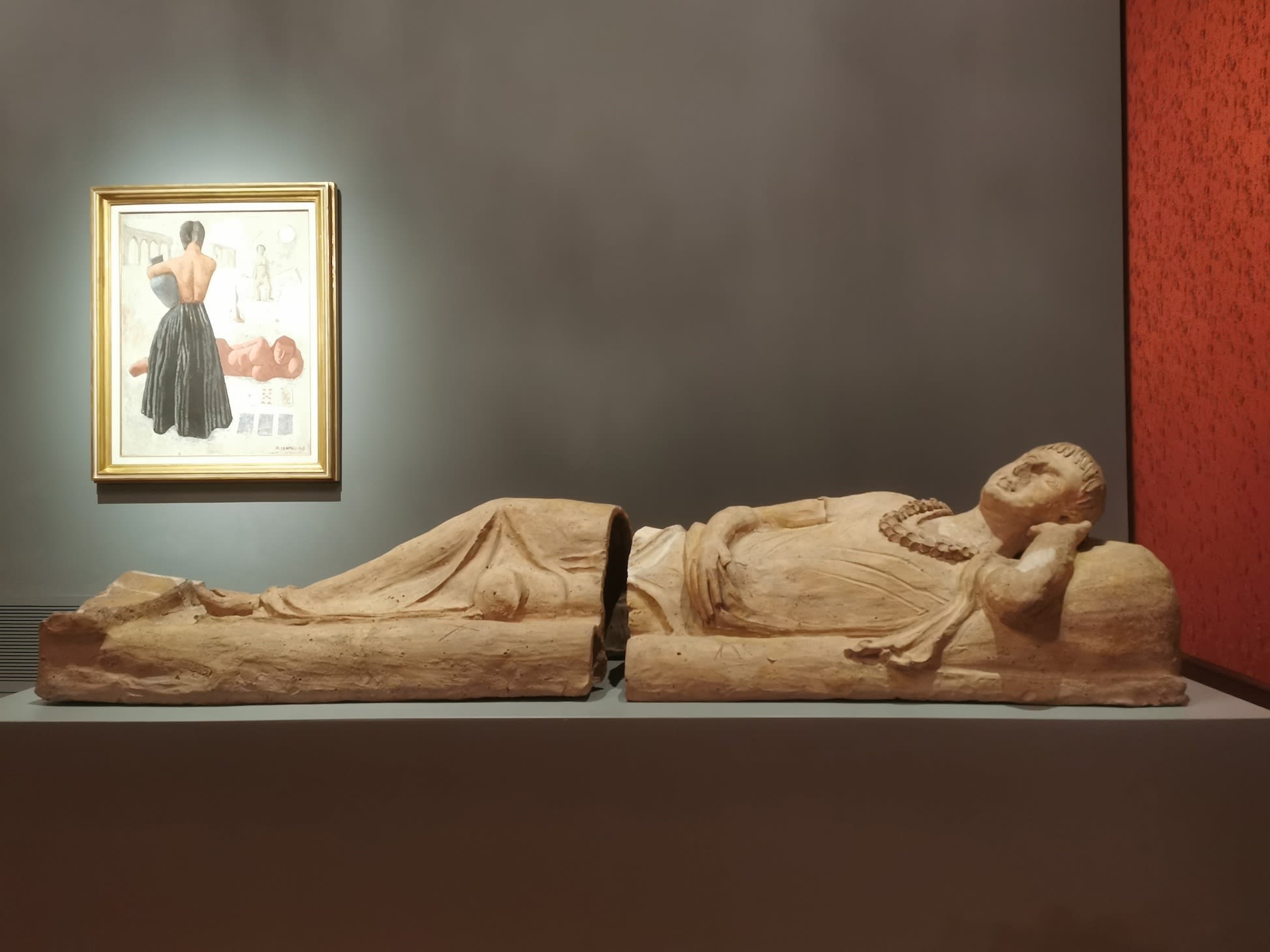
Massimo Campigli and the Etruscans The pagan happiness ACP - Palazzo Franchetti, Venezia
UNPUBLISHED AND EXHIBITED HERE FOR THE FIRST TIME
On paper, a utopia. Transporting precious, bulky and very delicate Etruscan finds to Venice. To build a magical encounter with the art of Campigli, notoriously struck by the knowledge of the Etruscan people after a visit to the Museum of Villa Giulia in 1928. "A pagan happiness entered into my paintings both in the spirit of the subjects and in the spirit of the work that he made it more free and lyrical ", the artist noted on that occasion. And the approximately 35 works by Campigli selected for the exhibition are flanked by about fifty finds from the Etruscan civilization, many of which unpublished and exhibited here for the first time. Between these two precious terracotta sarcophagi of the Civic Museum of Viterbo: a clay female sarcophagus from the second half of the third century. B.C. and a clay male sarcophagus from the end of the III, beginning of the II century. A.C.
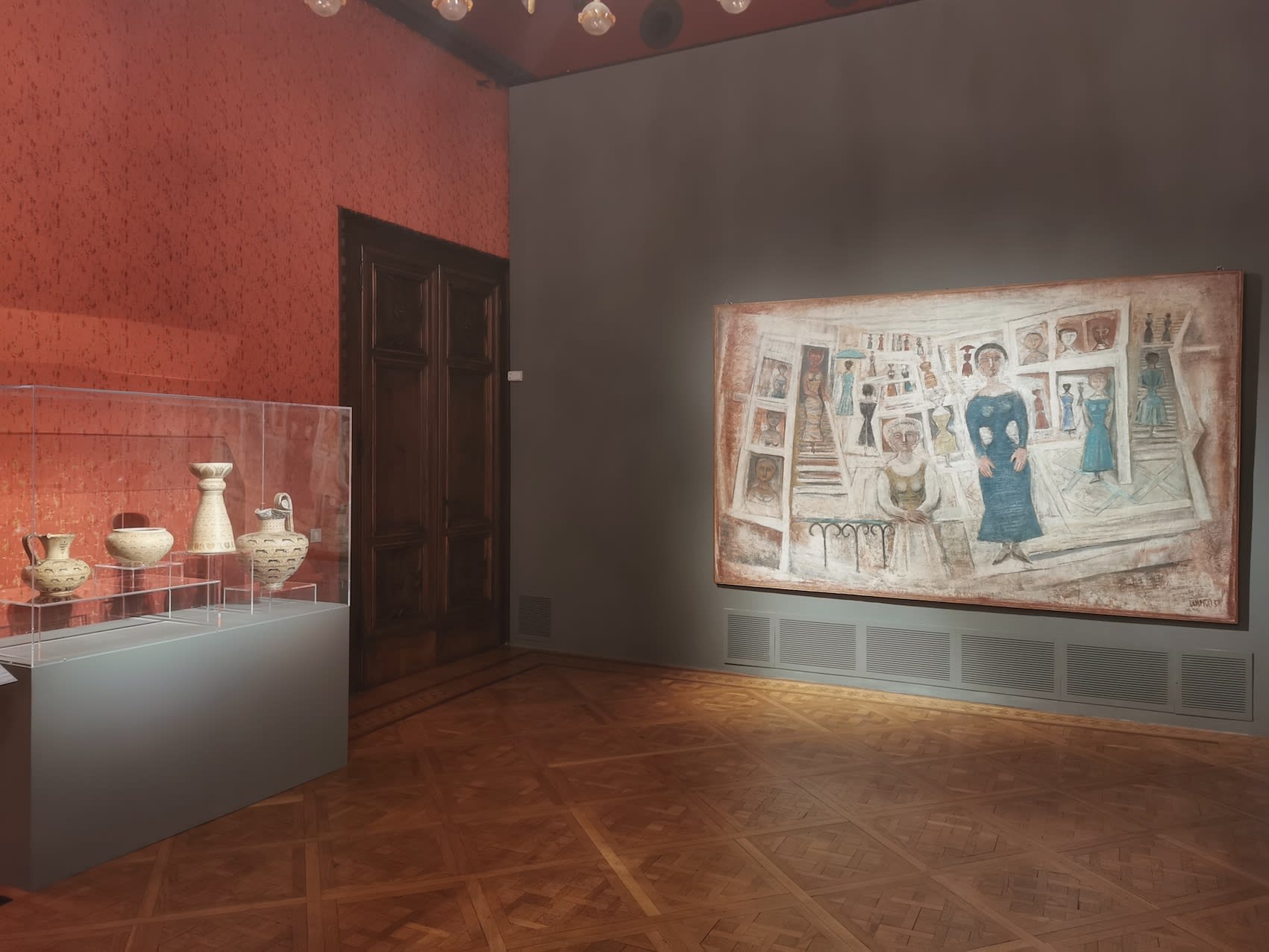
Massimo Campigli and the Etruscans The pagan happiness ACP - Palazzo Franchetti, Venezia
Two works by Campigli on display, "Bust with blue vase" and "Gypsies", are from that fateful year 1928. And they clearly mark the passage towards a new figuration, which becomes more and more evident in works such as "Women with the umbrella" from 1940 to the "Seated Woman" from 1961. The result? It is one of those exhibitions of rare intensity, a symphonic triumph of elements that converge to create visual and perceptual harmony.
